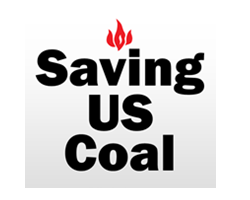US Coal Plants and The Great Arctic Outbreak of February 1899

By Fred Palmer, Senior Fellow CO2 Policy: Center for the Study of Carbon Dioxide and Global Change and Head of Saving US Coal
.jpg)
Fred Palmer
December 29, 2020 - Our state and federal policy makers have created an environment where always available and affordable electricity for the American people has taken a back seat to the powerful, current focus on “decarbonization”, which to date means shuttling in coal power plants. The trend started in the first term of President Obama with the entry of the 2010 EPA CO2 Endangerment Finding and the resulting EPA Clean Power Plan aimed squarely at US Coal. These misguided policies have been since mitigated by President Trump and his policies need to be respected and continued.
Our coal fleet and therefore the American people are at risk right now from misguided state policies that threaten all of us from the ongoing closure of coal plants and elimination of always available, affordable electricity. California, of course, has proven beyond argument that government policies that take the focus off prudence with respect to electricity production result in widespread, periodic black outs, outrageously high electricity prices and economic destruction through business closures and migration to electricity friendly states.
In California, the misguided electric policies have resulted in blackouts with the attendant denial of electric supply for air conditioning during a heatwave, which raises the risk of heat stroke and death, particularly among the elderly and sick. The blackout also came at a time when people were forced to remain indoors during the heat wave due to Covid-19.
In the East, our issues are more with winter than summer and we are absolutely on a path to have tragic electricity shortages in the dead of winter as the anti-coal policies continue. Plant closures are not over and there are many who call for a complete closure, but this anti-coal zeal is misguided and could be deadly if pursued.
In 1899, a cold wave and massive blizzard known as “the great arctic outbreak“ took the United States by storm, literally. Temperatures plummeted throughout the first two weeks of February: the Western half of the country felt it at first with the rest of the country feeling it later in the month. In mid-February, temperatures across the Midwest in the Ohio Valley were below -20F, in Washington DC -8F, Florida was impacted and Tallahassee hit an all-time low on February 13 of -2F. The bitter cold also brought snow and ice with blizzard conditions in the mid-Atlantic, New Jersey, Washington DC and Baltimore where snow reached 30 inches with ice everywhere.
Fast forward to today and what would a bitter outbreak like this mean for natural gas supply and prices as well as electricity availability? What would electric availability look like without coal plants? There are seven coal plants in West Virginia, for example, with the plants providing 91% of the State’s electricity needs and the State being a key electricity exporter and resilience anchor for electricity in the PJM Pool. Could the PJM Pool avoid blackouts without West Virginia coal plants?
From Washington to Boston there are over 50 million people, mostly in the PJM Pool or interconnected to it. In the PJM Pool itself, which reaches from the Atlantic to the Mississippi, there are 65 million people served by multiple coal and natural gas plants. In an Arctic Outbreak today, what would the price be for natural gas and would there be enough electricity and gas supply for homes, hospitals and civil society generally? If not, are there enough coal plants left to be able to carry the electricity load?
With DOE through EIA and the North American Electric Reliability Council both continuing to warn against taking out coal plants, can we just ignore these agencies, in the name of “decarbonization”? Many will say yes, the latter is more important than electric supply. But they can’t say, in the event of widespread shortage, human suffering and even death, that they “didn’t know”.
An Arctic Outbreak has happened before and we will have an Arctic Outbreak again, guaranteed. By saving coal plants in all regions of the country from the travails of cold and heat, we service and save people.
EPA says more CO2 in the air is a “current threat” to human health and welfare therefore shut in coal. The view from here says while looking for ways to reduce CO2 emissions from coal combustion, let us recognize that coal for electricity is necessary for human health and welfare, and agree that to preserve coal plants a moratorium on further closures is needed.
Particularly to protect us all from the next Arctic Outbreak.

